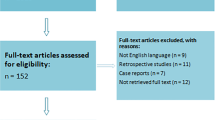Abstract
A fourth type of opioid receptor, termed ORL1, has been cloned and nociceptin (also known as orphanin FQ) has been identified as an endogenous ligand at this receptor. We examined whether nociceptin affects the release of noradrenaline in the brain. For this purpose, cerebral cortex slices from the mouse, rat or guinea-pig were preincubated with [3H]noradrenaline and then superfused with medium containing desipramine and rauwolscine. Tritium overflow was evoked electrically (0.3 Hz) or by introduction of Ca2+ 1.3 mM into Ca2+-free K+-rich (15 mM) medium. Nociceptin 1 µM reduced the electrically evoked tritium overflow from mouse, rat and guinea-pig brain cortex slices by 80, 71 and 36%, respectively. Naloxone 10 µM did not change the effect of nociceptin. All subsequent experiments were performed on mouse brain cortex slices and in the presence of naloxone 10 µM. The concentration-response curve of nociceptin (maximum inhibition by 80%, pEC50 7.5) was shifted to the right by the non-selective ORL1 receptor antagonist naloxone benzoylhydrazone and the selective ORL1 receptor antagonist [Phe1ψ(CH2-NH)Gly2]-nociceptin(1–13)NH2 (pA2 6.6 and 7.2, respectively). Naloxone benzoylhydrazone did not affect the evoked overflow by itself whereas [Phe1ψ(CH2-NH)Gly2]-nociceptin(1–13)NH2 caused an inhibition by maximally 35% (pEC50 7.0; intrinsic activity α 0.45). The inhibitory effect of [Phe1ψ(CH2-NH)Gly2]-nociceptin(1–13)NH2 was counteracted by naloxone benzoylhydrazone. Nociceptin also reduced the Ca 2+-evoked tritium overflow in mouse brain cortex slices superfused in the presence of tetrodotoxin. This effect was also antagonized by naloxone benzoylhydrazone, which, by itself, did not affect the evoked tritium overflow. In conclusion, nociceptin inhibits noradrenaline release more markedly in the mouse than in the rat or guinea-pig brain cortex. The effect of nociceptin in the mouse brain cortex involves ORL1 receptors, which are located presynaptically on noradrenergic neurones.
Similar content being viewed by others
Author information
Authors and Affiliations
Additional information
Received: 19 June 1998 / Accepted: 17 July 1998
Rights and permissions
About this article
Cite this article
Schlicker, E., Werthwein, S., Kathmann, M. et al. Nociceptin inhibits noradrenaline release in the mouse brain cortex via presynaptic ORL1 receptors. Naunyn-Schmiedeberg's Arch Pharmacol 358, 418–422 (1998). https://doi.org/10.1007/PL00005273
Issue Date:
DOI: https://doi.org/10.1007/PL00005273




